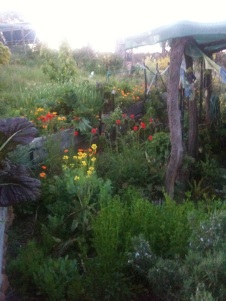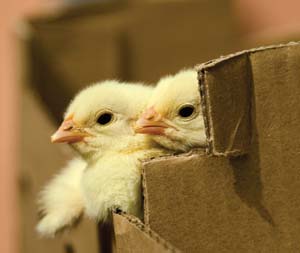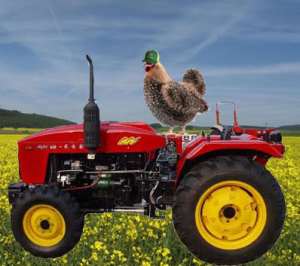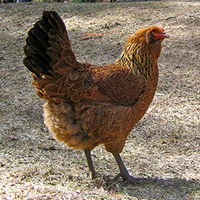By Alanna Moore
Permaculture, the integrated approach to edible landscape design for permanent agriculture, was developed in the 1970s by Bill Mollison and David Holmgren, but its impact here in Australia has not been as strong as its advocates might have hoped for. Many struggling communities in India, Asia and elsewhere have achieved much higher levels of food security and quality of life, thanks to the creation of permaculture eco-systems, but in the western world people have had it easy for too long and become content to source their food from soul and ethics free supermarkets, where food quality is dubious.
But the deterioration of the global economic system in 2008 has changed things. Not since the Great Depression has there been such a movement towards backyard food production, with seed companies reporting the rapid uptake of vegetable seeds that are overtaking the sales of flower seeds for the first time. The interest in permaculture is now surging as a new generation of people look to it to solve some of the world’s environmental problems by starting in their own backyard.
Food and shelter are the basics of life. But our culture has created a schism in that we look to specialists to provide these for us, when in the past everybody had the necessary know-how to produce their own. Rules and regulations make it seem more complex than is necessary, but it doesn’t have to be rocket science at all. Certainly there are skills required and these are sadly lacking in the general population, except for those lucky schools where permaculture gardening is undertaken.
What is the permaculture approach?
Permaculture is about appropriate, eco-friendly design and the relationship between the elements of the design. It aims to reduce our eco-impact through edible landscaping, cutting the food miles our sustenance travels and the nitrogen and phosphorus footprint entailed in its production. Permaculturists aim to be kind to nature and to each other, to foster community cohesion and the sharing of our surpluses. For instance if you became good at growing beans and only had room for some bean trellises in the garden, you could swop your surplus with neighbours for different vegetables.
Some of the keypoints of permaculture design are to identify and harness the natural energies available to a garden, such as solar, water, gravity and wind energy (as opposed to designing just with the use of fossil fuels in mind). To do this, one must initially read the landscape and get to know it pretty well. Find out what are the hazards presented, such as bushfire, spray drift from other farms etc. When does the sun shine at different locations at times of the year? Where does water flow when a storm dumps a few inches of precious rainwater and how to collect and channel it to where it’s needed?
Once these types of things are all noted, one selects plants that have multi-functionality, ‘stacking’ them in multi-tiered food forests if space permits. For instance a useful windbreak tree is the Casurina, or she-oak. It also produces a lovely mulch from the needle-like leaves and improves the soil as it is able to fix atmospheric nitrogen.
Our homes can also be designed for multi-functionality, ideally becoming smaller and more flexible than the current ‘go big’ approach. Increased flexibility can manifest as moveable interior walls for homes, for example, that can help us to adapt to life’s changes, so that extensions are not required.
Even one’s activities can have multi-functionality. Thus when I collect dead eucalyptus leaves to reduce the fire hazard in the forest on my farm I then pile them up and mix them with llama poo and other additives to make next year’s compost for fertilising the garden. There is no need to import fertiliser.
One’s urine is also a very valuable fertiliser and ideally is never flushed down the loo, as we take responsibility for our nitrogen footprint! We also have a worm farm toilet and thus our own waste becomes food for bacteria, worms and ultimately plants and us; rather than just pollution. Naturally one attempts to produce as little un-re-usable waste material as possible on the path to sustainability.
Permaculture demands increasing plant biodiversity, ideally selecting a range of crops rather than a few. For instance, flowers grown in the vegetable garden ensure a good habitat for useful insect life. (And some flowers are also edible.) A range of vegetable varieties ensures that something will be harvested in the event of extreme weather, which we must come to expect. These are planted in ‘guilds’, grouped with companion plants and located according to water, sun and soil requirements they have in common.
An indigenous approach to permaculture is also very worthwhile in plant selection. For too long the permaculture movement has been responsible for introducing weed species to places, when an appropriate native plant would have done the job perfectly well. So I encourage people to go native whenever possible and keep in sync with the ethics of the modern landcare movement, which is such a positive force in our region.
Gardening in the Goldfields
Gardening can be rather challenging in the Goldfields region, as I discovered after moving down from the sub-tropics in 2000. It’s been woefully dry since then and I quickly realised that the English style gardens of yesteryear are a thing of the past. There isn’t enough water to keep them alive and water is too precious to waste on water hogging plants, especially if they don’t give us a feed or something useful!
Better to think Mediterranean, think succulent and, once again, think native! The diversity of native plants, some edible, never ceases to amaze and delight me! Many Mediteranean and native plants grow on dry, hard, rocky hillsides. and once established, these plants can be pretty much be left to get on with it. I have many such seemingly inhospitable sites on my permaculture farm at Yapeen. Mind you – I did have to get some earth moving equipment in to dig planting holes and trenches for them!
A judicious phase of earthworks at the beginning of one’s gardening or farming adventure can go a long way. It can be used to create usable garden niches, such as terraces from slopes, or to channel rain run-off into dams and ponds. But it can get a bit extreme. I remember seeing Bill Mollison’s five acre farm in Tyalgum, northern New South Wales, when he was there in the 1990s. It was totally covered in ponds and he was passionate about the ability of water based food production to out produce land based growing. I felt it was a bit over the top and I prefer a more gentle and sensitive approach to landscape design.
There are many strategies for growing food in arid climes, in soil that isn’t much good for food plants and with the problems of frost, heatwaves and pestilence. I will be covering these practical considerations in my course ‘Permaculture Design for the Goldfields’ in January 2009, so please come along and help to create a little learning community, where we can share ideas, plants and seeds, and discover the fun of how to live sustainably. See you there!
Alanna Moore
3 diplomas of permaculture
Earthworks trainer (NSW)
and editor of soon-to-be-uploaded web magazine ‘Living Lightly’ in www.permacultureireland.ie (I will also be promoting permaculture in Ireland in 2009).





